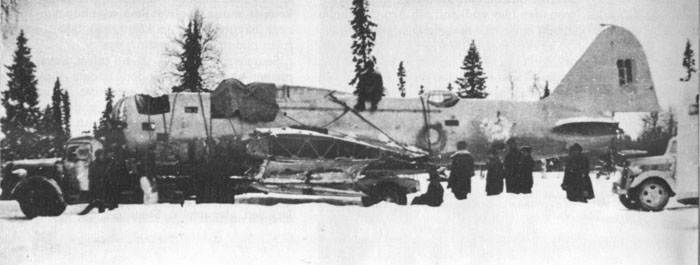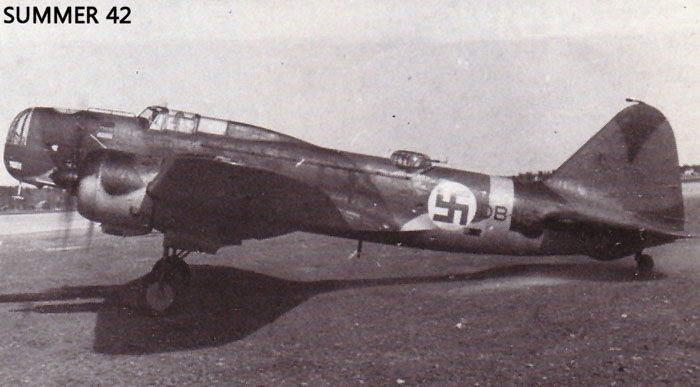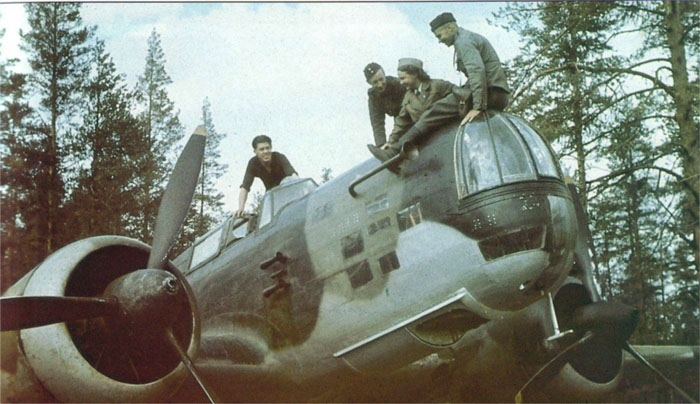Updated on June 28, 2012
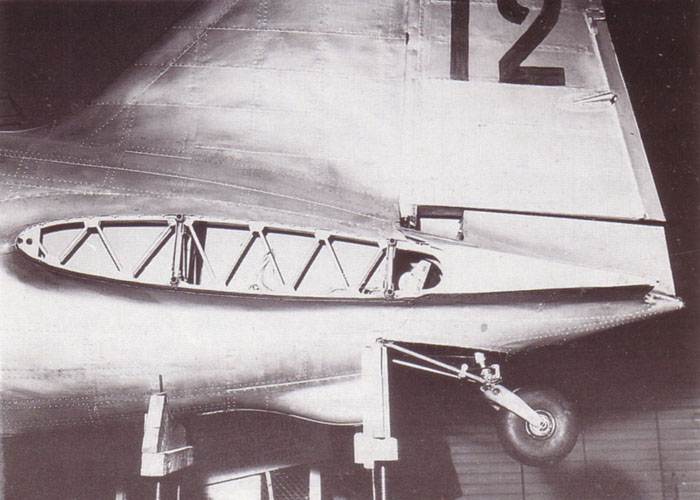
|
DB-3 'red 12' was captured by Finns in Winter war.
This aircraft was shot down on January 29th, 1940 over Hauho,
Finland, by FAF Fokker D.XXI FR-106 (piloted by J.Visapaa, who was a test
pilot and he was testing a repaired Fokker D.XXI over the Aircraft factory
in Tampere).
Red 12 landed suffering limited damage. Crewmembers Yandushev
Grigoriy, Kurbatov Grigoriy, Zuyev Nikolai survived and were taken prisoners.
After repairs red '12' became VP-13 in Finnish AF.
|
|
Finns captured five DB-3s in repairable conditions
during the Winter War; they were repaired in the depot on Tampere and put
in Finnish service at first with serials from VP-11 to VP-15 (DB-11 to DB-15
after September 1941).
Six further DB-3s were bought from German war booty; when they
arrived in Finland on 12 September 1941, they were marked DB-16 to DB-21.
left: Red 11, another DB-3 captured is good conditions by Finns,
is loaded on a truck. Red stars are roughly covered, perhaps by snow. The
layout of the windows on the side of the nose looks different than the one
of red 12 /VP-13.
|
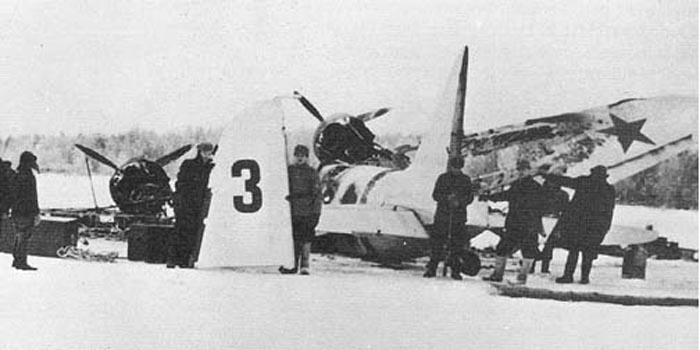
|
Red(?) 3 was of the same unit of red 12, but it was more
unlucky. Here it is completely destroyed after having been shot down. |
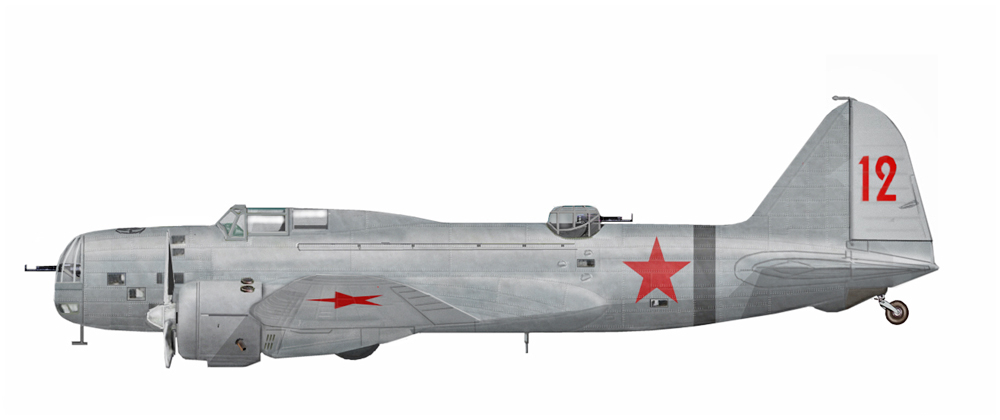
Red 12 in Soviet service.
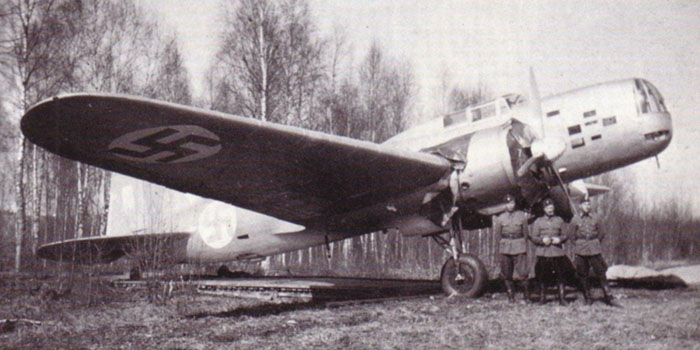
|
It is likely that the plane 'red 12' wore Finnish marks
on the original Soviet Aluminium finish as it was for n.11 (in this photo)
and n. 15, but there are not photos available to confirm this. As we see,
the Soviet marks (including the n.11 on the rudder) were overpained with silver
paint.
|
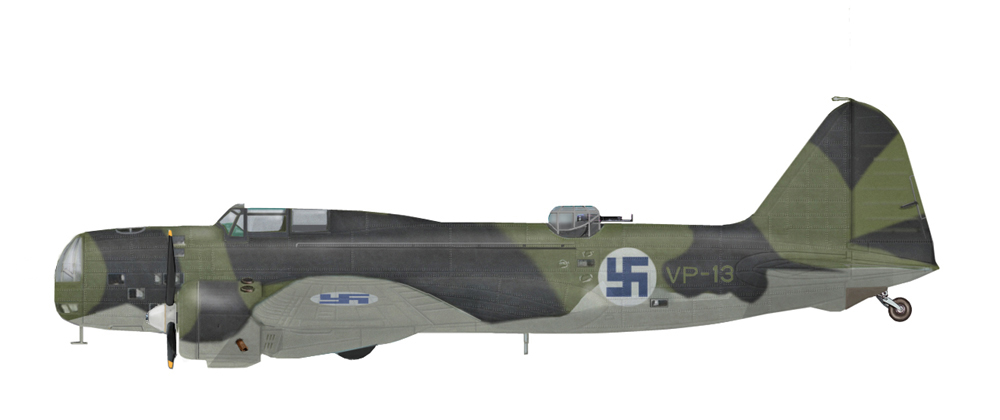
The plane was delivered to LLv 46 in February 1941 as VP-13. Its undersurfaces
were grey or silver at first.
VP-13 was flown from Turku to Rechlin test flight center Germany on May 12,
1941. Pilot on this flight was Captain Jussi Räty. That transmission flight
has been quite dangerous in the middle of the narrow Baltic sea. A Soviet type
aircraft near Sweden and Soviet areas and German fighters on the other side could
easily have been victim of friendly or enemy fire.
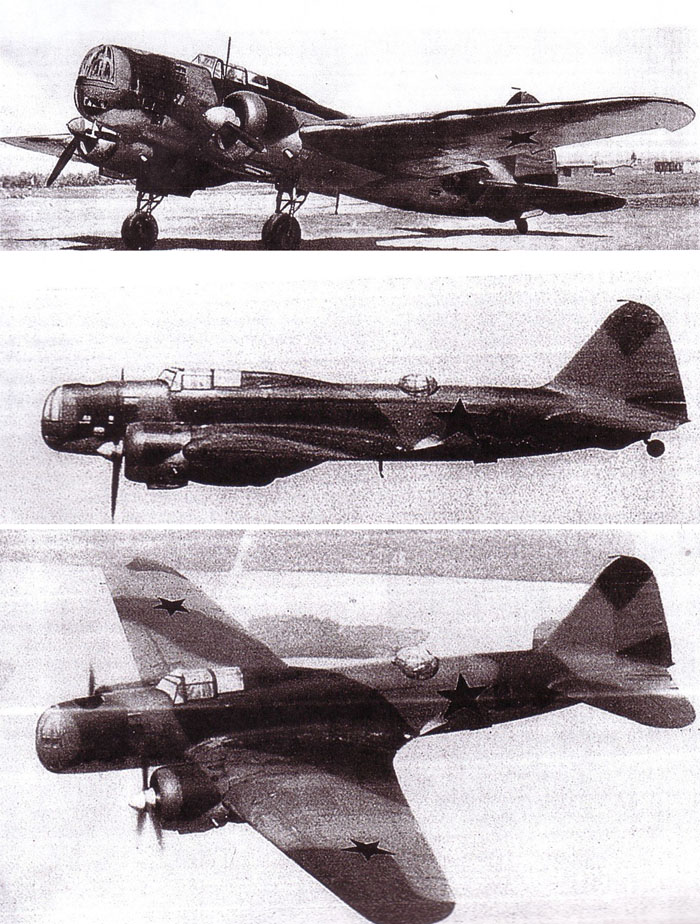
|
Three photos of VP-13, possibly taken in Reichlin base
for some recognition manual. The plane has the Finnish camo, but rough red
stars have been added on the photos. Despite this alteration, they allow to
see well the camo pattern from above.
The machine guns have been removed, as it was the upper nose
hatch doors in the second and third photo. It seems that the spinners have
their front of different colors, possibly white (left one) and blue (right
one).
Images from Luftwaffe Journal, issue 7
|

The plane as it appeared in Reichlin, with wide yellow repaintings and German
marks.

|
VP-13 at war booty exhibition in Berlin on September 5, 1941.
The temporary red stars could have been traced on white paper sheets.
The plane had yellow repainting on undersurfaces, cowlings and spinners,
rudder and elevators.
Photo from Barbarossa victims, Mushrooms
|
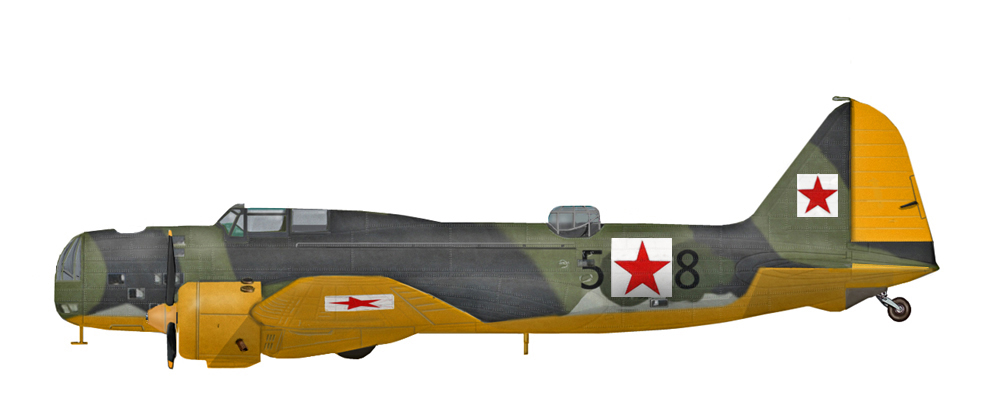
Profile of the plane as exposed in Berlin.
The plane was returned to Finns on September 12 in bad conditions. In Finland,
it was modified and put in service again. It was delivered to Photography Flight
Ahtiainen/LeLv 48 on April 27, 1942.
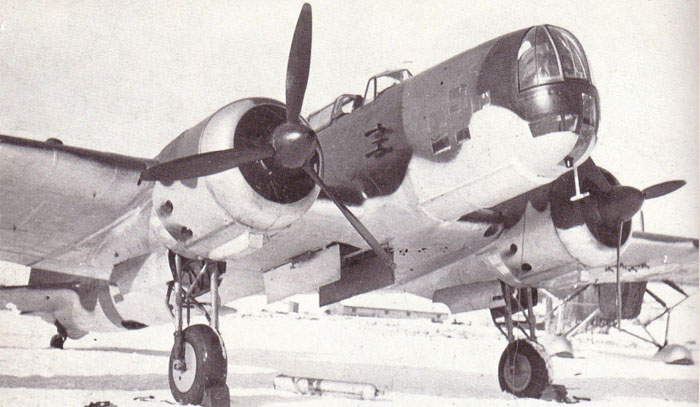
|
This image is probably dated at the beginning of 1942.
After the total yellow repainting operated by Germans, the undersurfaces have
been repainted with Finnish light blue, with yellow wingtips and band on the
fuselage. The new code DB-13 has replaced the old VP-13 in September 1941;
it was painted in black over green and yellow surfaces, and in green over
yellow surfaces. Spinners are black. It has a new Finnish-built sliding door
to cover the access under the nose. There is no any MG in the front turret.
The doors of the rear fuselage ventral hatch have been removed.
Note how dark the yellow band on the fuselage appears in this
photo; this allows us to exclude that the engine and nose undersurfaces were
painted yellow.
|
After some restoration and update, the plane was delivered to Photography Flight
Ahtiainen/ LeLv 48 in April 1942.
|
DB-13 in spring 1942. |
|
A color photo taken in 1942. The details of the nose are well visible
here.
A large hand grip has been installed over the nose; another device, similar
to an hand grip but ending with a trumpet-shaped open end (a large Venturi?)
, was added on its right side.
The new sliding door installed by Finns is in opened position; it seems
to see a large circular lens of a reconaissance camera just inside. |

|
Photo taken in summer 1942. One can see that the backgrounds of the swastikas
are still white. A thin black elk is visible on the left side of the stabilizer.
Note the evident absence of doors on the rear ventral hatch.
The plane was later transferred to 2/LeLv48 on November 23, 1942, and then
to Photography Flight/LeLv48 on April 19, 1943.
|
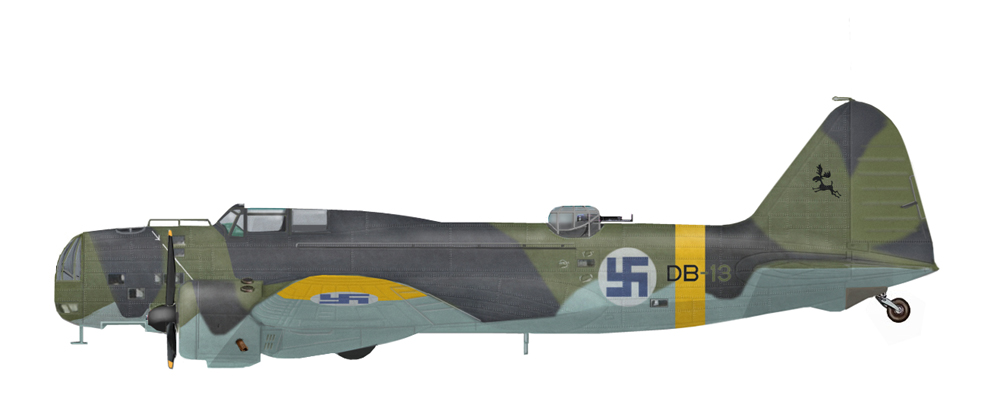
DB-13 as it appeared after the spring 1942, up to 1944.
The plane was delivered to the State Aircraft Factory for overhaul on December
13, 1943; after these works, a radio mast was installed on the nose.
The plane passed to 2/LeLv 48 on February 12, 1944, then to Special Photography
Flight/PleLv48 on May 28, 1944.
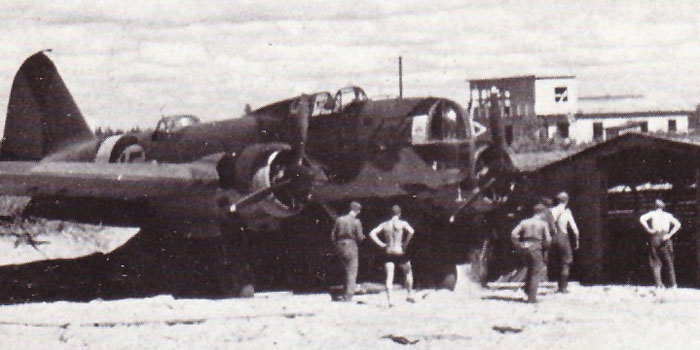
|
Here is DB-13 in July 1944, with an aerial mast added on
its nose.
A flower ace is painted on both sides of the nose.
The swastikas already have a grey background, but the yellow
axis recognition bands are still there.
Note that some black has added on the right engine cowling
to reduce the visibility from above.
|
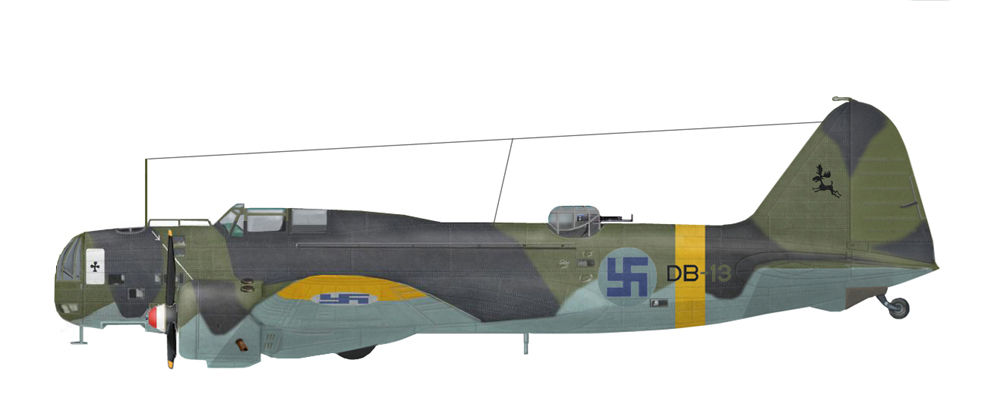
The plane as it appeared in July 1944.
In August 1944 the plane was in service with 2/PLeLv 46.
On September 4/5, 1944 the Soviets agreed to the armistice with Finland on
the condition that the Finns request the Germans to leave by September 15, and
start driving them out of Finland from then onwards. The first real battle between
the brothers-in-arms took place on September 15 when the Germans tried to capture
the island of Suursaari in the Gulf of Finland.
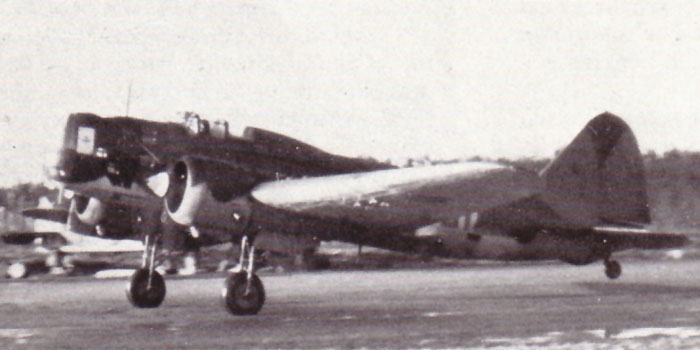
|
Here is DB-13 in October 1944; the yellow identification
bands were deleted after the armistice with the Soviet Union and the combats
against the German forces; note that the swastika disk is grey,and in the
photo appears undistinguishable from the light blue of the undersurfaces.
The spinner was repainted black-white-red
.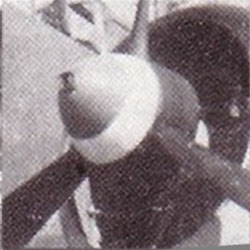
|
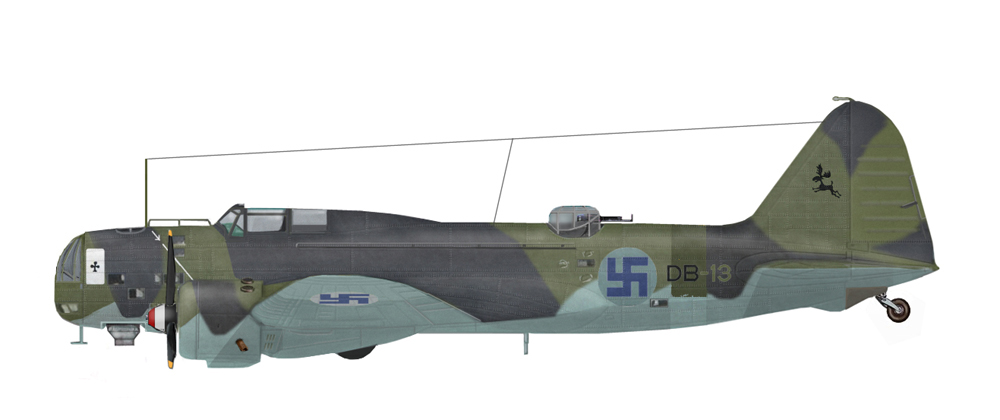
In this profile, the plane is depicted with a large protruding camera on the
nose hatch on the base of a profile on . We've represented it so, even if we
haven't photographic evidence of such device.
The plane was passed to PLeLv 45 on December 4, 1944, and to P LeLv 43 on February
19, 1945.
DB-13 was one of four Finnish DB-3 to survive the war. It returned to the depot
on November 1, 1945, after having been flown for 372 h 50 min in Finnish service.
Bibliography:
Red Stars 5 . C-F Geust, G Petrov and S Tirkeltaub - Baltic Fleet Air Force
in Winter War.
Kalevi Keskinen Kari Stenman Klaus Niska: Venäläiset Pommittajat.
Jukka Raunio :Lentäjän näkökulma IV
Suomen Imailuhistoriallinen Lehti no.1.2003.
Hannu Valtonen: Lufwaffen pohjoinen sivusta

